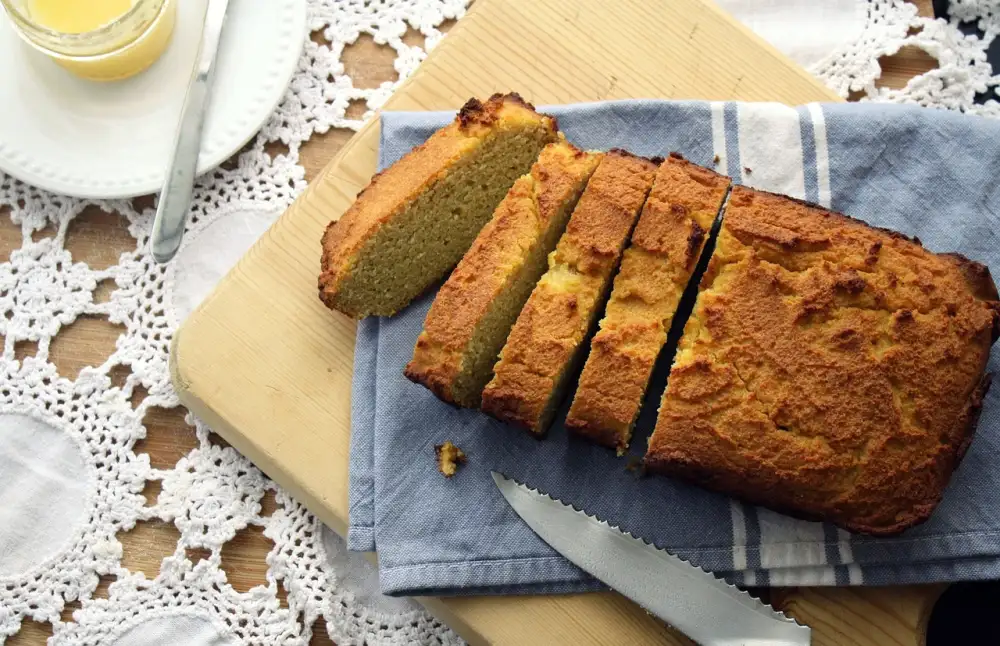Unlocking the Secrets of Gluten-Free Flour: A Health-Conscious Guide

Gluten-free flour has become increasingly popular in recent years as more people are adopting a gluten-free lifestyle. But what exactly is gluten-free flour? Simply put, it is a type of flour that does not contain the protein known as gluten. Gluten is found in grains such as wheat, barley, and rye, and can cause adverse reactions in individuals with celiac disease or gluten sensitivity. Gluten-free flour provides an alternative for those who want to enjoy delicious baked goods without the negative effects of gluten. In this article, we will delve into the world of gluten-free flour and explore its benefits, nutritional value, and tips for using it in cooking and baking. So let's unlock the secrets of gluten-free flour and discover how it can delight our senses while keeping us healthy!
Understanding gluten and its effects on health
Understanding gluten and its effects on health is crucial for those who are considering a gluten-free diet. Gluten is a protein found in wheat, barley, and rye, which gives dough its elasticity and helps it rise. However, for individuals with celiac disease or gluten sensitivity, consuming gluten can lead to various health issues.
Celiac disease is an autoimmune disorder where the ingestion of gluten triggers an immune response that damages the small intestine. This can result in nutrient deficiencies, digestive problems, fatigue, and even long-term complications if left untreated.
Gluten sensitivity, also known as non-celiac gluten sensitivity (NCGS), is a condition where individuals experience adverse symptoms after consuming gluten but do not have celiac disease. Symptoms may include bloating, abdominal pain, diarrhea, and fatigue.
By understanding the negative effects of gluten on health, individuals can make informed decisions about their dietary choices and consider incorporating gluten-free flour into their cooking and baking routines.
Benefits of using gluten-free flour
Using gluten-free flour in your cooking and baking can offer a multitude of benefits. Firstly, it allows individuals with gluten sensitivities or celiac disease to enjoy a wide range of delicious foods without experiencing uncomfortable symptoms. Additionally, gluten-free flour is often higher in fiber and nutrients compared to traditional wheat flour, making it a healthier choice for everyone. Furthermore, using gluten-free flour can lead to improved digestion, increased energy levels, and even weight loss. So why not embrace the benefits of gluten-free flour and unlock a world of culinary possibilities?
Types of gluten-free flours available
There are several types of gluten-free flours available in the market today, offering a wide range of options for those with dietary restrictions or health concerns. Some popular choices include almond flour, coconut flour, rice flour, tapioca flour, and sorghum flour. Each type of flour has its own unique properties and flavors, making them suitable for different recipes and culinary creations. Experimenting with these various gluten-free flours can open up a whole new world of possibilities in the kitchen.
Nutritional value of gluten-free flour
Gluten-free flour offers a range of nutritional benefits that make it a healthy alternative to traditional wheat flour. While it may lack gluten, it is often enriched with additional nutrients to ensure a well-rounded diet. Many gluten-free flours are high in fiber, which aids digestion and promotes satiety. They also contain essential vitamins and minerals, including iron, calcium, and B vitamins. Additionally, some gluten-free flours are made from nutrient-rich ingredients like quinoa or almond meal, providing an extra boost of protein and healthy fats. By incorporating gluten-free flour into your diet, you can enjoy the nutritional advantages while still indulging in delicious baked goods and meals.
Tips for using gluten-free flour in baking and cooking
When using gluten-free flour in baking and cooking, there are a few tips to keep in mind. Firstly, it is important to note that gluten-free flours have different textures and absorb liquids differently than traditional wheat flour. Therefore, it is crucial to follow recipes specifically designed for gluten-free baking.
To improve the texture of baked goods made with gluten-free flour, you can add xanthan gum or guar gum as a binding agent. These ingredients help mimic the elasticity and structure that gluten provides.
Another tip is to use a combination of different gluten-free flours to achieve better results. Blending flours like rice flour, almond flour, tapioca flour, and potato starch can create a more balanced texture and flavor profile.
It's also essential to measure your ingredients accurately when using gluten-free flour. Too much or too little can significantly affect the outcome of your recipe.
Additionally, adding extra moisture to your batter or dough can prevent dryness commonly associated with gluten-free products. This can be achieved by incorporating ingredients such as applesauce, mashed bananas, yogurt, or even additional oil into your recipes.
Lastly, be patient when working with gluten-free flours. They may require longer mixing times or additional resting periods to allow the ingredients to fully hydrate and develop flavor.
By following these tips, you can unlock the full potential of gluten-free flour in your baking and cooking endeavors while still enjoying delicious and satisfying results.
Potential challenges and solutions when using gluten-free flour
Potential challenges when using gluten-free flour include a different texture and taste compared to traditional wheat flour. Gluten-free flours tend to be denser and can result in baked goods that are dry or crumbly. Additionally, gluten-free flours may not have the same binding properties as wheat flour, making it challenging to achieve the desired consistency.
However, there are solutions to overcome these challenges. Adding xanthan gum or guar gum can help improve the texture and binding properties of gluten-free flour. It is also important to experiment with different ratios of gluten-free flours and other ingredients such as eggs, fats, and liquids to find the right balance.
Another challenge is that gluten-free flours often require additional moisture. Increasing the amount of liquid in recipes or adding ingredients like applesauce or yogurt can help retain moisture and prevent dryness.
Furthermore, it is crucial to follow recipes specifically developed for gluten-free baking rather than trying to substitute regular wheat flour with gluten-free alternatives. These recipes have been tested and perfected to ensure successful results.
In conclusion, while there may be challenges when using gluten-free flour, they can be overcome with proper techniques and experimentation. By embracing these solutions, individuals can enjoy delicious baked goods without compromising their health-conscious choices.
In conclusion, embracing the health benefits of gluten-free flour is a wise choice for those seeking to improve their overall well-being. By eliminating gluten from our diets, we can alleviate digestive issues, reduce inflammation, and promote better nutrient absorption. Gluten-free flours offer a wide variety of options that cater to different dietary needs and preferences. With proper knowledge and techniques, we can unlock the secrets of gluten-free flour and create delicious, nutritious meals that delight our senses while keeping us healthy. So why not embark on this culinary journey and discover the wonders of gluten-free cooking? Your body will thank you!
Published: 28. 11. 2023
Category: Health



